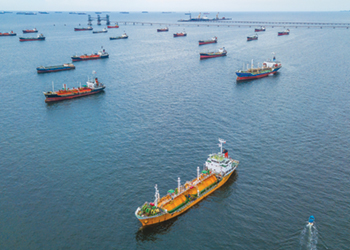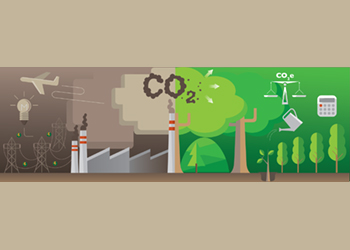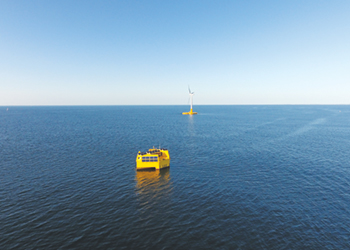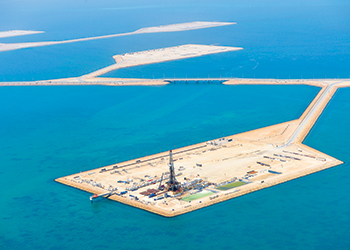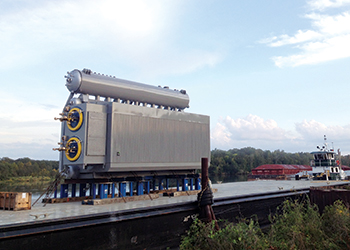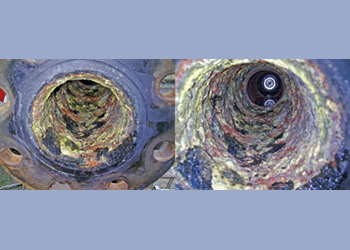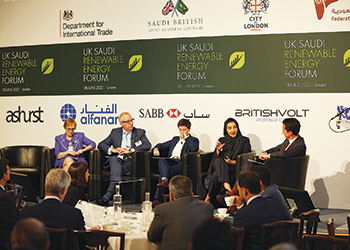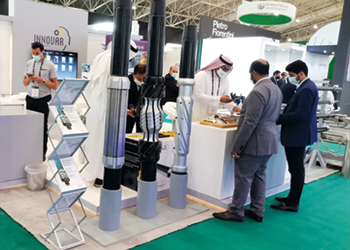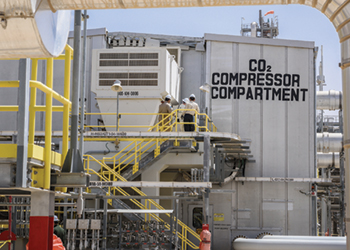
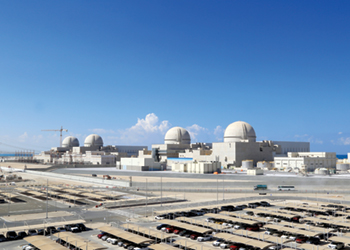 Nuclear energy is a highly reliable baseload electricity supplier
Nuclear energy is a highly reliable baseload electricity supplier
Achieving carbon neutrality while still ensuring energy security is a major challenge, which cannot be met if important electricity generating technologies such as nuclear power are excluded from the solution, says a study
Nuclear energy can play a stronger role than is envisioned in many national energy transition strategies. Without a sizable expansion of nuclear power, "the world’s climate challenge will get a whole lot harder".
These are the findings of a report by the King Abdullah Petroleum Studies and Research Center (KAPSARC).
Achieving carbon neutrality while still ensuring energy security is a major challenge under any plausible climate scenario. This challenge cannot be met if important electricity generating technologies with near-zero carbon emissions are excluded from the solution.
Excluding nuclear energy will also compromise the availability of the electricity supply.
The rationale for nuclear power in a climate-constrained world is twofold.
It can be a cost-effective measure in helping limit the global temperature rise to 2 deg C; and it is a proven, mature and safe technology and has essentially zero GHG emissions.
Nuclear power’s widespread acceptance and expansion has three prerequisites. First, it needs to be accepted politically as an effective GHG mitigation technology.
Second, its positive economic performance must prevail more consistently.
And third, its record of safe operations needs to be acknowledged, maintained and continuously advanced. In addition, a widespread acknowledgment that the deep geological disposal of nuclear waste can be accomplished safely is needed.
To address these concerns, it is necessary to raise public awareness of the safety record of current nuclear power plants (NPPs).
One of the important challenges to address is how to promote national policies and multinational cooperation to support the global expansion of safe, secure, strictly regulated and economically viable nuclear energy. Doing so is particularly important in newcomer countries, where much of the nuclear energy expansion is likely to take place.
GLOBAL STATUS
According to the International Atomic Energy Agency (IAEA), during 2020, the combined 393 gigawatt-electrical (GWe) contributed 10.2 per cent or 2,553 terawatt hours (TWh) of the global electricity supply and provided 28 per cent of the world’s low-carbon electricity.
That global market share, however, is low relative to the peak share 18 per cent in the mid-1990s.
At the end of 2020, 33 countries had one or more NPPs. Two countries, Belarus and the UAE, connected their first NPPs to their national grids that year.
All new builds are being constructed outside the Organisation for Economic Co-operation and Development (OECD). Since 2000, 96 of the 124 NPP construction starts occurred in Asia.
A difficulty in expanding nuclear energy is that building new NPPs is a lengthy process. The design and site must meet regulatory requirements before ground is even broken.
Plant construction then takes five to seven years, for current commercially available reactor sizes, before grid connection.
And first-of-a-kind (FOAK) designs and designs can take up to 10 years or more.
Altogether, it takes 10 to 15 years from deciding to add an NPP to the generating mix to supplying electricity to the grid.
OPERATIONAL COSTS
NPPs maybe expensive to build and difficult to finance but inexpensive to operate.
Capital costs make up 60 per cent to 70 per cent of total nuclear generating costs; uranium fuel accounts for 5 per cent to 7 per cent of costs; and other costs include front-end fuel cycle costs (enrichment and fuel fabrication costs), and NPP operation and maintenance costs.
Finally, some costs are associated with the back end of the fuel cycle (spend nuclear fuel [SNF] management, high-level waste [HLW] disposal and plant decommissioning).
In terms of resource sustainability, uranium deposits are plentiful and pose no constraint to future nuclear energy deployment.
The total uranium content in the Earth is 100 teratonnes (Tt). The current uranium prices are about $55/kg, and global annual reactor demand is 60,000 tonnes.
Water usage by NPPs is second only to that required for agriculture. However, most of the water used for cooling plants is returned to rivers or seas.
NPPs consume about 2,000 to 3,000 liters of water per MWh over their lifecycle, with coal plants having similar or somewhat lower consumption rates.
Photovoltaic energy requires about six times less water than nuclear and coal. However, concentrated solar power uses about 4,000 liters of water per MWh. Wind power has negligible water consumption.a
The estimated land requirements for nuclear power is only 0.6 sq m per GWh. Meanwhile, the estimates for hydropower and large solar power are 49 sq m per GWh and 1,275 sq m per GWh, respectively.
NUCLEAR POWER AND EMISSIONS
Since 1970, hydroelectricity and nuclear power have provided the vast majority of low-carbon electricity globally). Starting essentially from 0 per cent in 1970, nuclear power grew to contribute close to 50 per cent of such electricity in the 1990s.
Hypothetically, in the absence of nuclear energy, all non-nuclear fuels used for electricity generation in a given year would increase proportionally to cover the nuclear share.
Based on this assumption, nuclear power is estimated to have avoided a total of 76 gigatonnes (Gt) of carbon dioxide to date.
Nuclear power is second only to hydropower, with cumulative emissions of 101 Gt of carbon dioxide avoided. All other low-carbon-emitting, non-hydropower renewables began to make noticeable contributions from around 1990.
Since 2000, wind and solar power have been the fastest growing low-carbon electricity generators.
Their growth rates are comparable to that of nuclear power over the period from 1970 to 1990. As of 2019, other renewables are estimated to have historically avoided 17 Gt of carbon dioxide.
RELIABILITY FACTOR
New renewables (solar and wind) cannot continuously provide 100 per cent power to a national grid at a reasonable cost, even if production costs are low. Electricity production from these sources is highly variable across days and weeks and between summer and winter.
On the other hand, renewables cannot supply reliable baseload power, and the cost of electricity storage to maintain the baseload remains prohibitive.
The key issues are the daily, weekly and seasonal structures of electricity demand and the nature of renewable resources.
Compared to renewables, many NPPs, especially some advanced designs, offer economic electricity that can be dispatched according to grid requirements.
Existing large NPPs have proven to be fully grid-compatible for baseload electricity in advanced countries with large national electricity grids.
But more importantly, nuclear energy can provide several energy services beyond electricity.
These services include district heat, industrial process heat, chemical fuel production (especially hydrogen) and desalination services.
These services can displace carbon-emitting processes that are largely outside of the electricity system.
Thus, they can support the complete transformation of the energy economy required to meet the Paris targets.
The inherent flexibility and adaptability of new NPP designs, especially SMRs, will allow nuclear energy to facilitate the transition to net-zero energy systems.
FUTURE OUTLOOK
An energy system that limits global warming requires 900 GWe to 1,000 GWe of new nuclear generation capacity to be grid-connected between 2020 and 2050. This capacity includes between 190 GWe to 290 GWe to replace retired NPPs.
Annual global grid connections of 10 GWe starting in 2021 will have to be ramped up to 35 GWe by 2030. This annual level will need to be maintained on average until 2050.
The future scenario of nuclear energy growth pales when compared with the expansions of wind and solar energy.
In 2019, wind and solar capacities grew by 59 GWe and 98 GWe, respectively. Their total global capacities reached 623 GWe and 586 GWe, respectively. Renewables (including hydropower, biomass, etc) accounted for 72 per cent of global capacity growth in 2019.
By comparison, NPPs with a combined capacity of merely 396 GWe generated 2,657 TWh of dispatchable electricity in 2019.
CONCLUSION
Nuclear energy is already playing a crucial role in reducing emissions from electricity generation. However, if this role is not expanded, achieving the international goal of avoiding unacceptable global climate change will be extremely difficult. The evidence presented in this study shows that nuclear energy’s climate benefits can be obtained without significant impacts to safety, security or energy costs.



















































































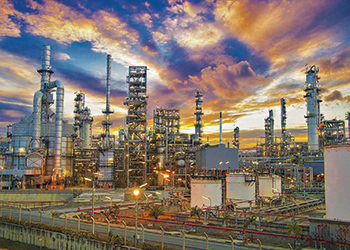



.jpg)


